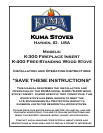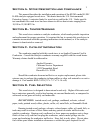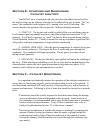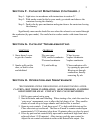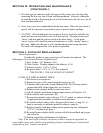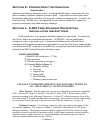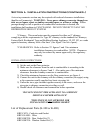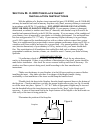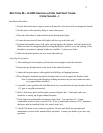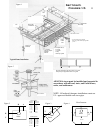
Section J- Stove Maintenance Warnings
DO NOT OVERFIRE THIS HEATER:
EXCESSIVE TEMPERATURES CAN CAUSE THE
STEEL PLATE TO WARP OR CRACK.
*CAUTION:
Never use gasoline, gasoline-type lantern fuel, kerosene, charcoal
lighter fluid or similar liquids to start or ‘freshen-up’ a fire in this
heater. Keep all such liquids well away from the wood stove while it is
in use.
*CREOSOTE: Formation and need for removal
When wood is burned slowly, it produces tar and other organic vapors,
which combined with expelled moisture forms creosote. The creosote
vapors condense in the relatively cool chimney flue of a slow burning fire.
As a result, creosote residue accumulates on the flue lining. When ignited,
this creosote makes an extremely hot fire. The chimney connector and
chimney should be inspected at least once every two months during the
heating season to determine if a creosote build-up has occurred. If
creosote has accumulated, it should be removed to reduce the risk of a
chimney fire.
*DISPOSAL OF ASHES:
Ashes should be placed in a metal container with a tight fitting lid. The
closed container of ashes should be placed on a non-combustible floor or
on the ground, well away from all combustible materials, pending final
disposal. If the ashes are disposed of by burial in soil or otherwise locally
dispersed, they should be retained in the closed container until all cinders
have thoroughly cooled.
*USE OF GRATE IS NOT NECESSARY FOR PROPER OPERATION OF
THIS STOVE.
Section K- Proper Draft Information
ACHIEVING PROPER DRAFT:
Draft is the force which moves air from the appliance through the
chimney. The amount of draft in your chimney depends on the length of the chimney,
local geography, nearby obstructions, and other factors. Too much draft may cause
excessive temperatures in the appliance and may damage the catalytic combustor.
Inadequate draft may cause backpuffing into the room and plugging of the chimney or
the catalytic. Inadequate draft will cause the appliance to leak smoke into the room
through the
5



